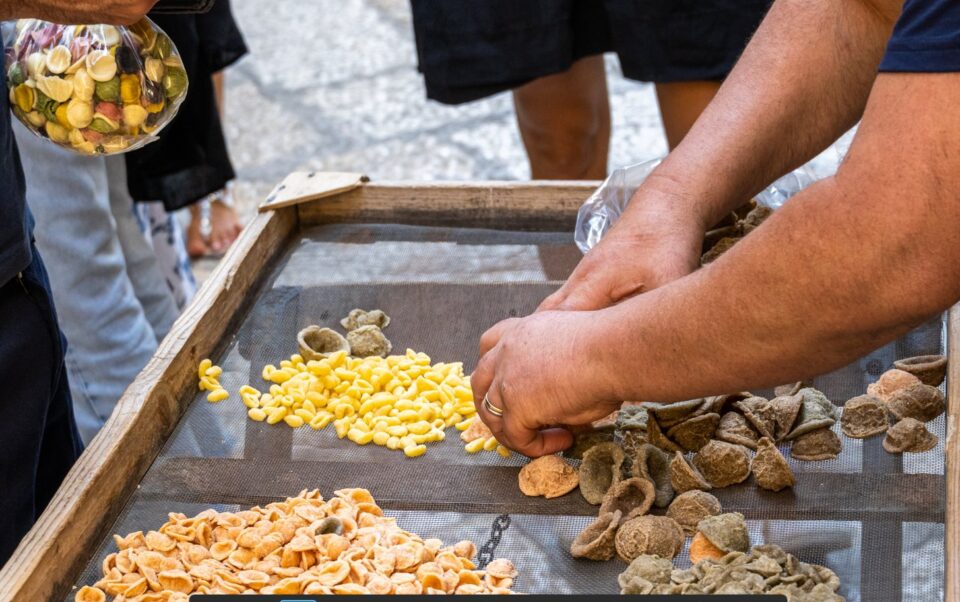IFAC Conference App
The SENSYS 2025 technical program is now available through the IFAC Conference App.
If you registered for SENSYS 2025, your account should already be enabled using the email address you provided during registration. To access the app, you must sign up within the app using that same email. If you wish to use a different email or encounter any issues, please contact paolo.scarabaggio@poliba.it from the email address you would like to activate.
The app provides:
- Full access to the technical program and papers
- Search functionality for sessions, papers, and authors
- Tools to create your personalized schedule (“My Program”)
- Information on meeting schedules, social events, and the conference venue
- Features for voting, Q&A, and session rating during interactive sessions
- Room maps, welcome notes, and local information
- Options for social media integration and peer-to-peer messaging
Get the IFAC App
Workshop venue
SENSYS 2025 will take place at Politecnico di Bari, the Technical University of Bari, located in Bari, Italy, at Via E. Orabona 4, 70125.
Established in 1990, Politecnico di Bari stands as the most recently founded Polytechnic University in Italy. It is characterized by a strong emphasis on technology and science, playing a crucial role in shaping the intellectual landscape of aspiring architects, engineers, and industrial designers.
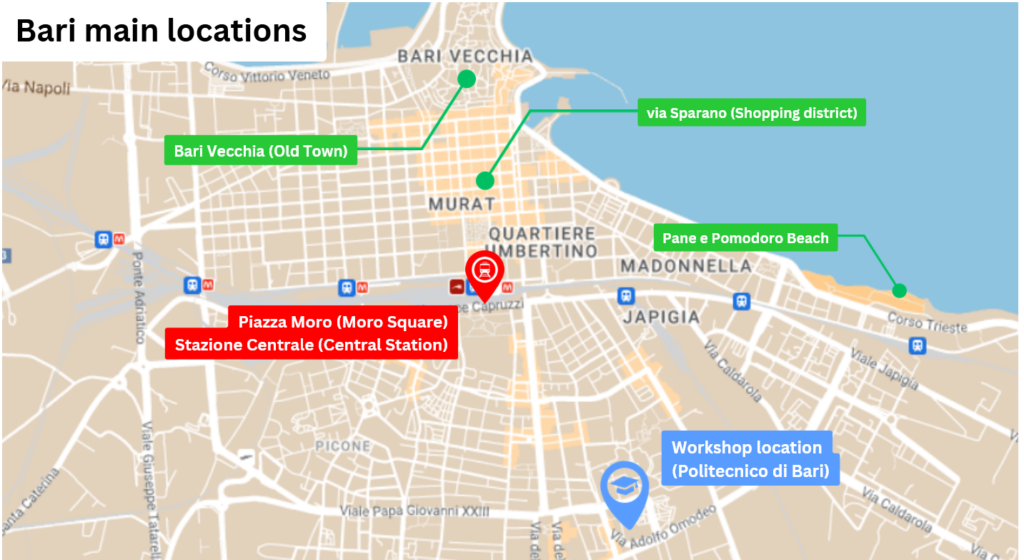
Getting Around Bari
Bari is a compact and welcoming city, easy to explore on foot or using its urban transport options. Walking is generally safe and pleasant, but please stay alert when crossing roads—even at pedestrian crossings.
Public Transport – AMTAB Urban Network
The AMTAB urban transport network is the most convenient option for reaching Bari’s key locations and most charming areas, including the Politecnico. Several bus lines connect the Main Railway Station (Piazza Aldo Moro) to the Politecnico di Bari and other city destinations.
- Ticket prices: Approx. €1 at authorized retailers; €1.50 if purchased directly on board.
- Timetables and stops: Visit the AMTAB website or use the MUVT app (also available in English for iOS and Android) to check real-time schedules, create itineraries, and buy tickets directly from your smartphone.
- Travel tip: Google Maps also provides reliable directions and public transport info in Bari.
Taxis
Taxis are readily available throughout the city. We recommend downloading the itTaxi app for convenient bookings. For additional information, visit www.taxibari.it.
Shared Mobility
Bari is embracing eco-sustainable mobility, offering a variety of shared transportation services:
Bike Sharing – VAIMOO
For a sustainable and active way to get around, use the VAIMOO app (iOS/Android) to find available bikes and enjoy Bari at your own pace.
Electric Kick Scooters
Easily rentable through dedicated mobile apps, scooters can be located on an interactive map showing availability and battery level. Simply scan the QR code to unlock. The system is free-flow, allowing one-way trips with flexible drop-off.
Providers: Lime, Tier, Bit, Telepass
Rates: ~€1 to unlock, €0.15–€0.22/min to ride, €0.05/min when paused.
Piky Electric Microcars and Scooters
Compact, colorful, and fully electric, Piky vehicles are ideal for urban mobility. Download the PikyRent Urban Mobility App (iOS/Android) to locate and rent vehicles.
Hotels
For your stay in Bari during the SENSYS Conference, we have reserved a number of hotel rooms at a discounted rate; booking will be available through the conference registration platform (opening soon). Additional hotels and B&Bs are also available independently, and we recommend using platforms such as Airbnb or Booking.com to explore further options. Please note that we have no formal agreements with these independent accommodations.
Most hotels are within walking distance, while others are easily accessible by public transportation. To determine the distance between these hotels and the conference venue, use the official Bari Public Transportation travel planner at https://www.mycicero.it/muvt/TPWebPortal/en
For more information on the accommodation, don’t hesitate to get in touch with Federica Casulli: federica@cicsud.it
Visa and Other Travel Information
All participants must ensure that they have obtained a visa that may be required to visit Italy before travelling.
Please contact your travel agent and/or the Italian Consulate/Embassy in your country for the latest information on the Italy visa issue as soon as possible. Visa processing time may vary. You are advised to make visa application at your earliest convenience if it is needed. You should allow approximately 12 weeks prior to the Conference, although this process may take longer in some countries. Information on visa requirements can be found at https://vistoperitalia.esteri.it/home/en where a simple form will guide you through a series of steps based on your country of origin. When asked “Reasons for your stay?”, choose “Study” and follow the instructions.
Reach Bari by Plane
The workshop venue is located in Bari, that can be easily reached from the International Airport of Bari (BRIIATA), also called Aeroporto Karol Wojtyła. It is located in the north-western part of the city of Bari. Bari Airport is modern and well-organized, and it offers trains, bus, and taxi services for connection with other localities. Carriers include ITA Airways, Lufthansa, Eurowings, Ryanair, and Wizzair.
For travelers arriving from Europe, we recommend considering not only direct flights to Bari but also exploring the option of arriving at the following two airports, which are in close proximity to Bari and can be conveniently reached by train or bus in a short amount of time.
- Flight to Brindisi (BDSIATA): There, you can take a direct bus shuttle to reach the Main Railway Station of Bari (i.e., Bari Centrale). Alternatively you can reach tre Brindisi main train station (Brindisi Centrale) and then take a train to Bari.
- Flight to Naples (NAPIATA): From Naples, you can opt for a direct bus or train to reach Bari Central Station.
For those arriving from outside Europe, we recommend considering a connecting flight through one of these airports, followed by a flight connection to Bari.
- Flight to Roma Fiumicino (FCOIATA): There, you can take a direct flight to Bari Airport (BRIIATA).
- Flight to Milano Malpensa (MXPIATA): There, you can take a direct flight to Bari Airport (BRIIATA).
Reach Bari by Train
Bari is also connected by high-speed trains from/to Rome, Milan, Turin, Bologna and Florence. Check the Trenitalia and Italo websites for timetables and prices.
Reach Bari by Coach
Bari is extensively connected to various cities in Italy, including Naples, Brindisi, and Rome, through a well-developed network of coach services. For convenient and efficient travel, consider checking companies’ offerings, such as FlixBus, Itabus, Marozzi, and Marino. Normally coaches stop for Bari is at the central railway station, precisely on Via Giuseppe Capruzzi.
Reach Bari by Boat
Bari is the destination for ferries incoming from the Greek port of Patras and Igoumenitsa. If you are traveling on a Eurorail during the low season, the cost is €16, during the mid season, €31. A normal ticket to Igoumenitsa is about €29 on the deck and in low – season. There are also ships to Bar and Kotor (Montenegro), Dubrovnik (Croatia) and to Durrës and Vlora (Albania). Ferry operators are either Superfast Ferries, Blue Star Ferries or Jadrolinija. An up-to-date site with international ferry schedules is here.
Tourism
Bari: the capital city of Apulia Region
The Apulia region (or Puglia, as it is known to the locals) is an important economic center in Southern Italy that forms the heel of the Italian boot and is located in the Southern Adriatic Sea.
In recent years Puglia has gradually built a reputation as a bridge between West and East, that mirrors an increasingly multi-cultural, open, tolerant and friendly community, connecting people, individuals and businesses, from different countries and cultures.
The capital city of Puglia is Bari, a modern city that keeps strong ties with its own traditions. Bari has a maritime flavor and deserves a glance for the panoramic seafront promenade.
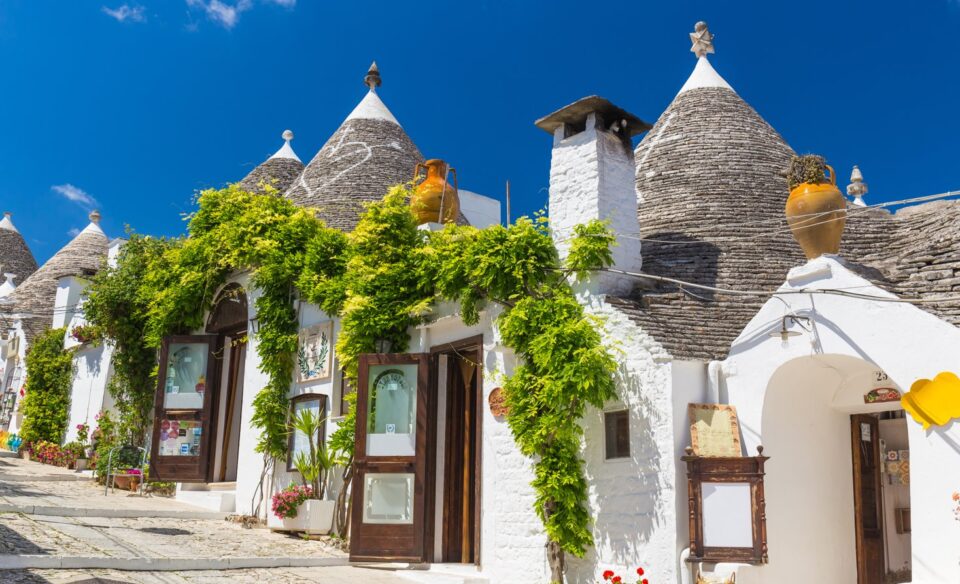
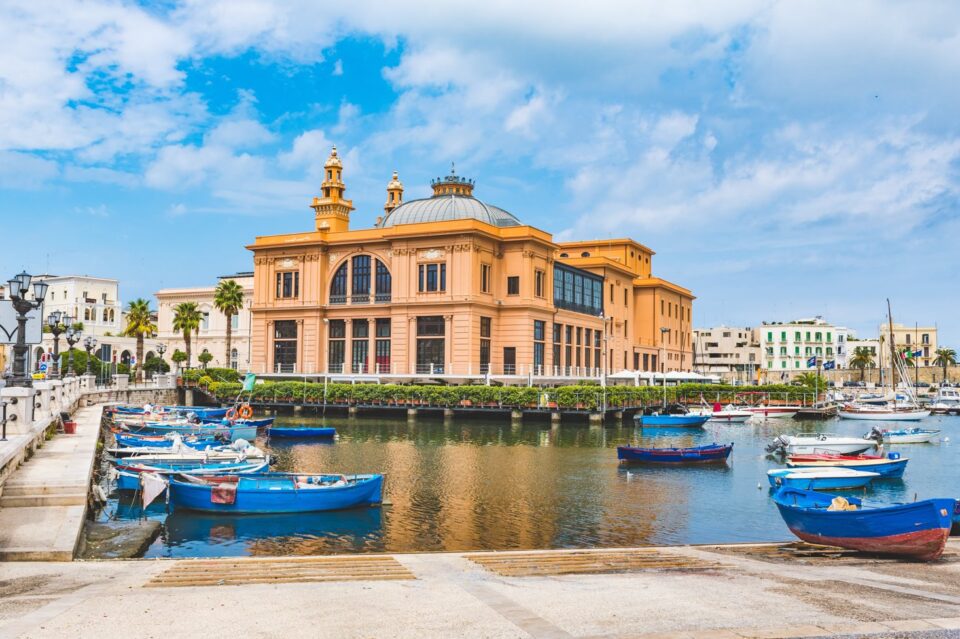
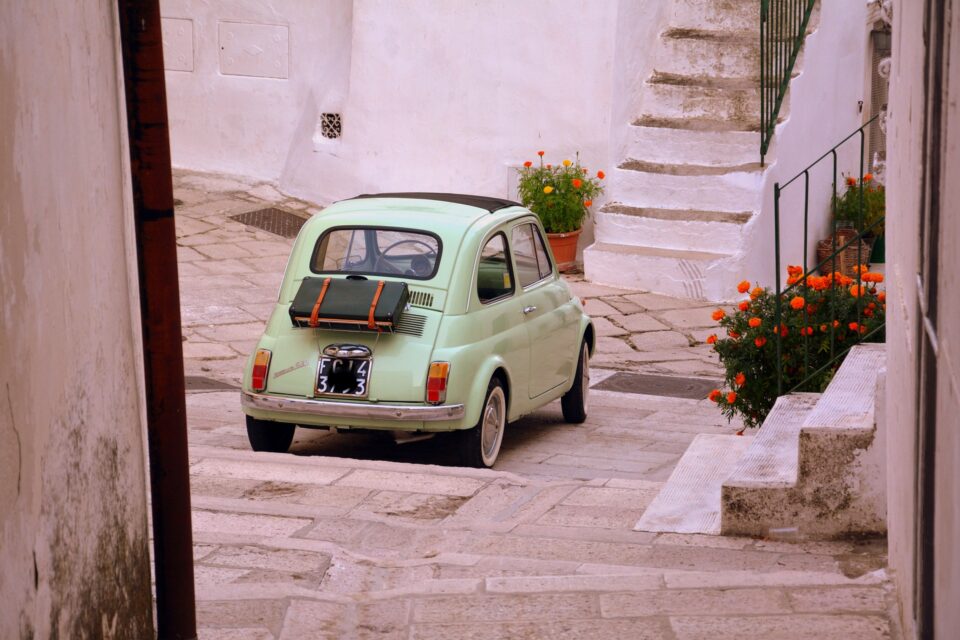
The historical and cultural heritage
The cultural al historical heritage in Puglia is witnessed by many landmarks: St. Nicholas’ Basilica, The Swabian Castle by Frederick II, The Margherita Theatre and the Petruzzelli Theatre (in the town of Bari)…
…Castel del Monte octagonal castle by Frederick II (in the town of Andria), the Trulli stone huts in the Unesco World Heritage Site of Alberobello (in the province of Bari), the Lecce Baroque (in the town of Lecce), and many more.
History of Bari
The origins of Bari are very old, but not well established. Items dating to the Bronze Age have been found in the oldest part of the town; however, most of the historians agree that the town has been founded between 1600 and 1100 B.C. by Illyrians, coming from the Balcanian peninsula, on the opposite side of the Adriatic sea. The name probably derives from that of Barione, the leader of one of these Illyrian groups.
The first reliable information on Bari dates back to the 4th century B.C. when it went under the Roman rule. In the following centuries it had a special relation with Rome and Tito Livio underlined its strategic importance.
After the fall of the Roman Empire, Bari was involved in the war between the Gots, and late the Longobards, against the Byzantines.
In the 9th century, after many raids, the Arabs succeeded the Longobards and settled in Bari for about 30 years, setting up an emirate. It lasted until 871 when the army of Ludovico II brought back the city under the Byzantine rule, which on the contrary did not meet the people’s favour.
In 1071 the city was conquered by the Normans, led by Roberto il Guiscardo, and became part of the dukedom of Apulia and Calabria.
This was the beginning of an important period in the history of Bari. In 1087 St. Nicholas’ holy remains were taken away from Myra (Turkey) by a group of sailors and brought to Bari, where the building of a dedicated Basilica was decided and started immediately. In 1089 the remains were led by Pope Urbano II in the yet built crypt of the Basilica (the whole Basilica was completed after about 100 year).
Later on, Bari and all the dukedom of Apulia and Calabria fell under the domination of the Norman King of Sicily, whose dynasty shortly came to the end and was replaced by the Hohenstaufen Swabians; this was the period in which Frederick II (later on crowned also Emperor of Germany) reigned. He loved Apulia (he was called “puer Apuliae”) and built or restored many castles in the regions, among which the Bari castle and the famous and mysterious Castel del Monte (on the top of a hill, about 50 km from Bari).
Angevin and Aragons rulers followed for about three centuries. Toward the end of this period, in the 16th century, two women had an important role in the Bari history: Isabel of Aragon, widow of the Duke of Milan Gian Galeazzo Sforza, who enlarged the castle making there her private residence, and Bona Sforza, Queen of Poland, who established strong links between Bari and the Cracow court.
After Bona Sforza’s death, Bari was again included in the kingdom of Naples, ruled by a Spanish viceroy, and that was a long period of decay for the Apulian city and the south of Italy as well.
At the beginning of the 19th century the French came, led by Napoleon Bonaparte, and his brother-in-law Jacques Murat became King of Naples. Under Murat Bari started to grow, shortly becoming the most important city of the region. In 1808 Murat decreed the building of the new part of the city, a modern district which after him was (an still is) called “Murattiano”.
At the end of the French rule, the Bourbons came back and reigned until the unification of Italy, in 1860. Bari is now the first city and administrative capital of the Apulia region, with about 350,000 inhabitants.
Nature around in Puglia
Nature around in Puglia is magnificent. The white high cliffs of Mattinata and Vieste, the long sandy beaches with crystalline water … the grottoes of Castellana Grotte, the second European biggest canyon of the Gravina di Laterza, the bauxite querry in Otranto, the beautiful little towns on the sea like Polignano and Monopoli, …of Gallipoli,…
… the little cities surrounded by acres of olive groves like Martina Franca, the white city of Ostuni, and may other special places make the Apulia region an incredible land to be discovered step by step.
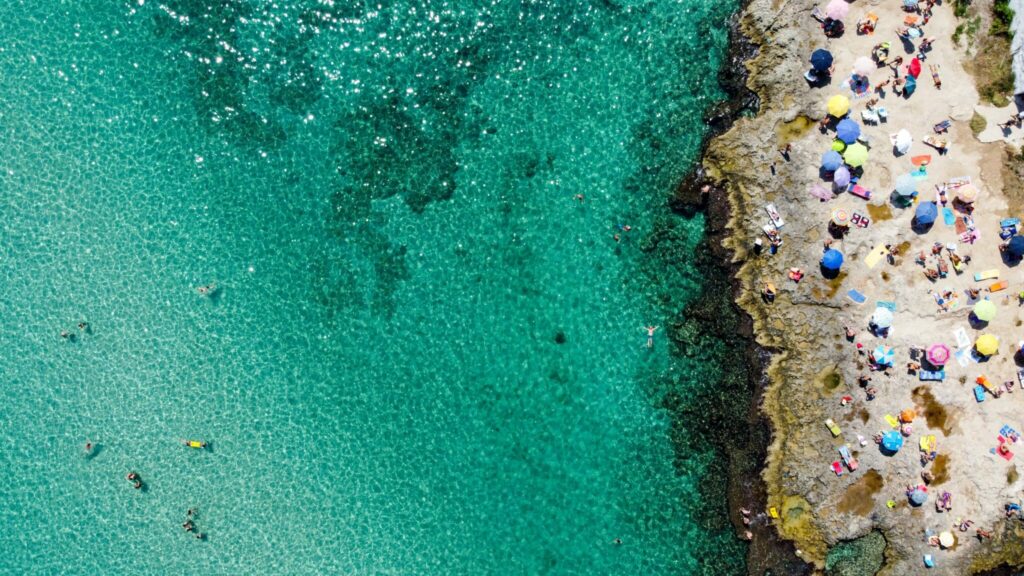
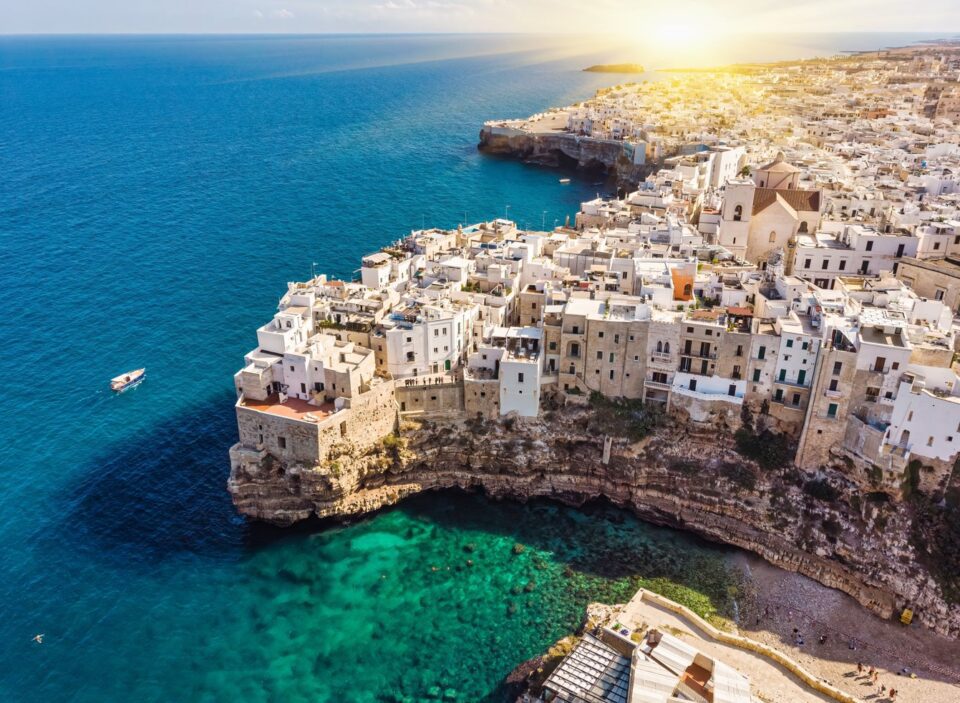
Puglia’s gastronomy
The region’s cuisine is based on typical products found within the surrounding region of Apulia: wheat, olive oil, seafood and wine. Local flour is used in homemadebread and pasta production including, most notably, the famous orecchiette ear-shaped pasta.
Homemade dough and olive oils are also used to bake fried panzerotti with mozzarella, and focaccia alla barese with tomatoes. Perhaps Bari’s most famous dish is the oven-baked Patate, riso e cozze (potatoes with rices and mussels). The whole Apulian region have a range of wines, including the classical Primitivo, Castel del Monte, Muscat, and most notably the recently emerging rosé wines.
The capital city of Puglia is Bari, a modern city that keeps strong ties with its own traditions. Bari has a maritime flavor and deserves a glance for the panoramic seafront promenade.

